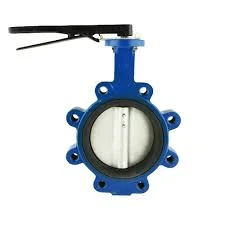12 月 . 06, 2024 15:45 Back to list
wafer type butterfly valve
Understanding Wafer Type Butterfly Valves Applications, Design, and Benefits
Butterfly valves are an essential component in various fluid control systems, distinguished by their simple yet effective design. Among the different types of butterfly valves, the wafer type butterfly valve stands out due to its versatility and ease of installation. This article explores the characteristics, applications, and advantages of wafer type butterfly valves, providing insight into why they are favored in numerous industries.
What is a Wafer Type Butterfly Valve?
A wafer type butterfly valve is a quarter-turn valve that uses a circular disc to control the flow of liquids or gases. The disc rotates on a shaft, and when the valve is fully opened, the disc is perpendicular to the flow, minimizing pressure drop. In the closed position, the disc is parallel to the flow, effectively blocking it. The valve is designed to be mounted between two flanges, hence the name 'wafer' type, implying that it does not have any extended ends for bolting, which simplifies installation between existing pipe flanges.
Design Features
Wafer type butterfly valves are engineered to be lightweight and compact. One notable design feature is their slim profile, which allows for space-saving installation, especially in congested environments. They are typically constructed from a variety of materials, including cast iron, stainless steel, and plastic, catering to different applications and environments.
The sealing mechanism is crucial for the valve's functionality. Wafer butterfly valves commonly employ elastomeric seals, which provide a reliable barrier against leaks. Additionally, they may include a manual or automatic actuator that enables easy operation, either by hand or through electronic control systems.
Applications
Wafer type butterfly valves find widespread use across numerous industries due to their adaptability. Some of the most common applications include
1. Water Treatment Plants They are used to control the flow of water through filtration and treatment processes, where leakage and reliability are critical.
2. Chemical Processing The chemical industry often requires valves that can withstand aggressive substances. Wafer type butterfly valves can be made from corrosion-resistant materials, making them suitable for handling various chemicals.
3. HVAC Systems In heating, ventilation, and air conditioning systems, these valves regulate the flow of air and water in a compact format, saving space while maintaining efficiency.
wafer type butterfly valve

4. Food and Beverage Industry Sanitary designs of wafer butterfly valves are essential in this sector, ensuring compliance with health regulations while facilitating efficient processing and flow control.
5. Oil and Gas Wafer type valves are utilized in pipeline systems to manage the flow of oil and natural gas, providing reliable operation under high pressures.
Advantages of Wafer Type Butterfly Valves
The popularity of wafer type butterfly valves can be attributed to several key advantages
- Compact Design Their slim profile allows for easy installation even in tight spaces, reducing overall system footprint.
- Lightweight Being lighter than many other valve types, wafer butterfly valves reduce the structural load on piping systems, making them easier to handle and install.
- Cost-Effective The simple yet effective design of these valves often results in lower manufacturing and installation costs, providing a cost-efficient solution for fluid control.
- Versatility They are suitable for a broad range of applications and can handle various media, including gases and liquids in different industries.
- Low Maintenance With fewer moving parts than other valve types, wafer butterfly valves tend to require less maintenance, leading to lower operational costs and increased longevity.
Conclusion
Wafer type butterfly valves are a significant choice for anyone involved in fluid control systems. Their compact design, lightweight nature, and versatility make them an advantageous solution in various industries, from water treatment to food processing. As technology evolves, we can expect improvements in the materials and designs of these valves, further enhancing their efficiency and expanding their applications. By understanding the principles behind wafer type butterfly valves, businesses can make informed decisions that contribute to improved operational performance and reliability.
Share
-
Understanding the Differences Between Wafer Type Butterfly Valve and Lugged Butterfly ValveNewsOct.25,2024
-
The Efficiency of Wafer Type Butterfly Valve and Lugged Butterfly ValveNewsOct.25,2024
-
The Ultimate Guide to Industrial Swing Check Valve: Performance, Installation, and MaintenanceNewsOct.25,2024
-
Superior Performance with Industrial Swing Check Valve: The Essential Valve for Any SystemNewsOct.25,2024
-
Industrial Swing Check Valve: The Ideal Solution for Flow ControlNewsOct.25,2024
-
You Need to Know About Industrial Swing Check Valve: Functionality, Scope, and PerformanceNewsOct.25,2024